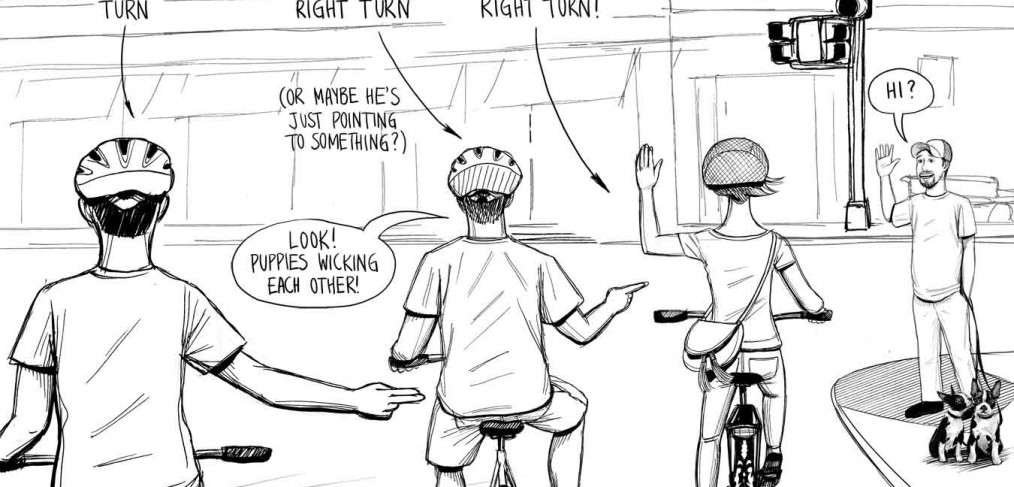
Mixed Signals
When you’re on a bike it helps to communicate where you’re going. At first it may seem weird, especially if you’ve never seen anyone signal before. This was the case when I started biking. But I gave it a shot. At first I stuck to the basics: “right” and “left.” I started with the most textbook versions.
Then I realized it was much more nuanced- it was about using body language. Even the littlest gesture said something. I could mix it up depending on the situation. I could convey urgency, scale it up or down, even completely change it up sometimes….
You can even get creative and make your own signals. Though, everything you do becomes signal of some sort…
But once you get over the awkwardness of hand signals- it’s a relief to have more in your commuter vocabulary than “right,” “left,” and “honk.”

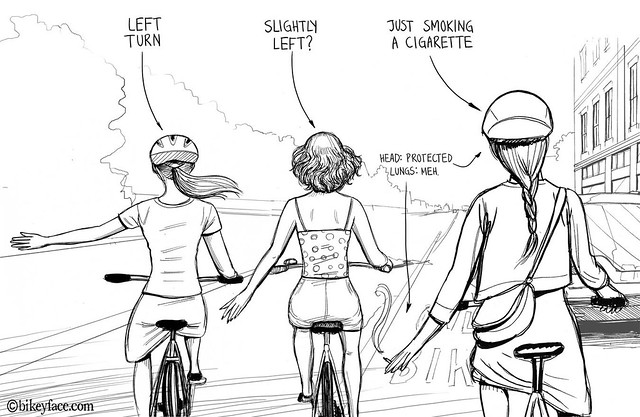
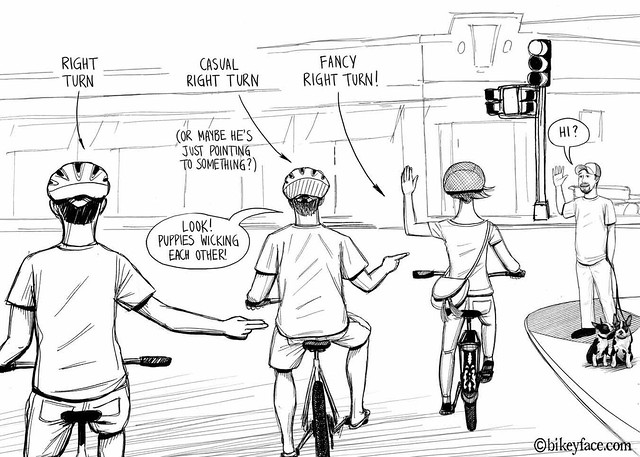


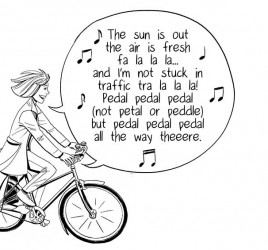
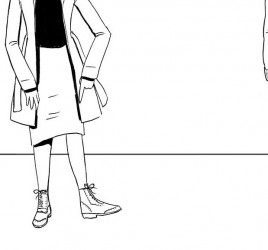
The sign under “Just Smoking a Cigarette” isn’t entirely dissimilar to the normal sign used in the UK, in group rides, to indicate to the person behind that there’s something down there that they need to be aware of. Typically accompanied by a cry of “glass” or “hole”, but often just a waving hand pointing at a pothole, so they know they’ll need to avoid it, even if they couldn’t see it before, because of you.
Often times, it’s rare enough that your average commuter cyclist makes any sign, let alone an inadequate one. Ho hum.
you forgot foot signals. just stick out your foot the direction you are turning. works like a charm
I’ll admit I sometimes spit to the left as a signal to overtaking cars: “Be so kind as not to pass me closer than I can spit.”
Never to a cyclist, of course.
I find myself using the slow/stop signal much more frequently in the last year, even more than turn signals. Why? Because on a two-lane road, when there is oncoming traffic such that there is not enough room for motorists behind you to move over to pass, the slow signal very effectively holds them back, combined with moving into the center of the lane. Following, of course, a head turn (another means of communication) to make sure it’s safe to do that. Then when the oncoming traffic has passed, move back to the right slightly (lane position – yet another means of communication) and give the overtakers a friendly wave.
Almost regardless of the content, I think almost any communication is helpful (excepting of course the one-finger salute), because I suspect motorists partly just want to know that you are aware of them. If you’re making yourself predictable and helping them know what you expect, sometimes they’re even grateful. A few months ago I had a motorist thank me (after we both happened to arrive at the same restaurant) for actively holding him behind me on a narrow twisty two-lane road with lots of blind curves and hill crests. I was confirming that it wasn’t safe to pass, and when I saw that it was, I let him go.